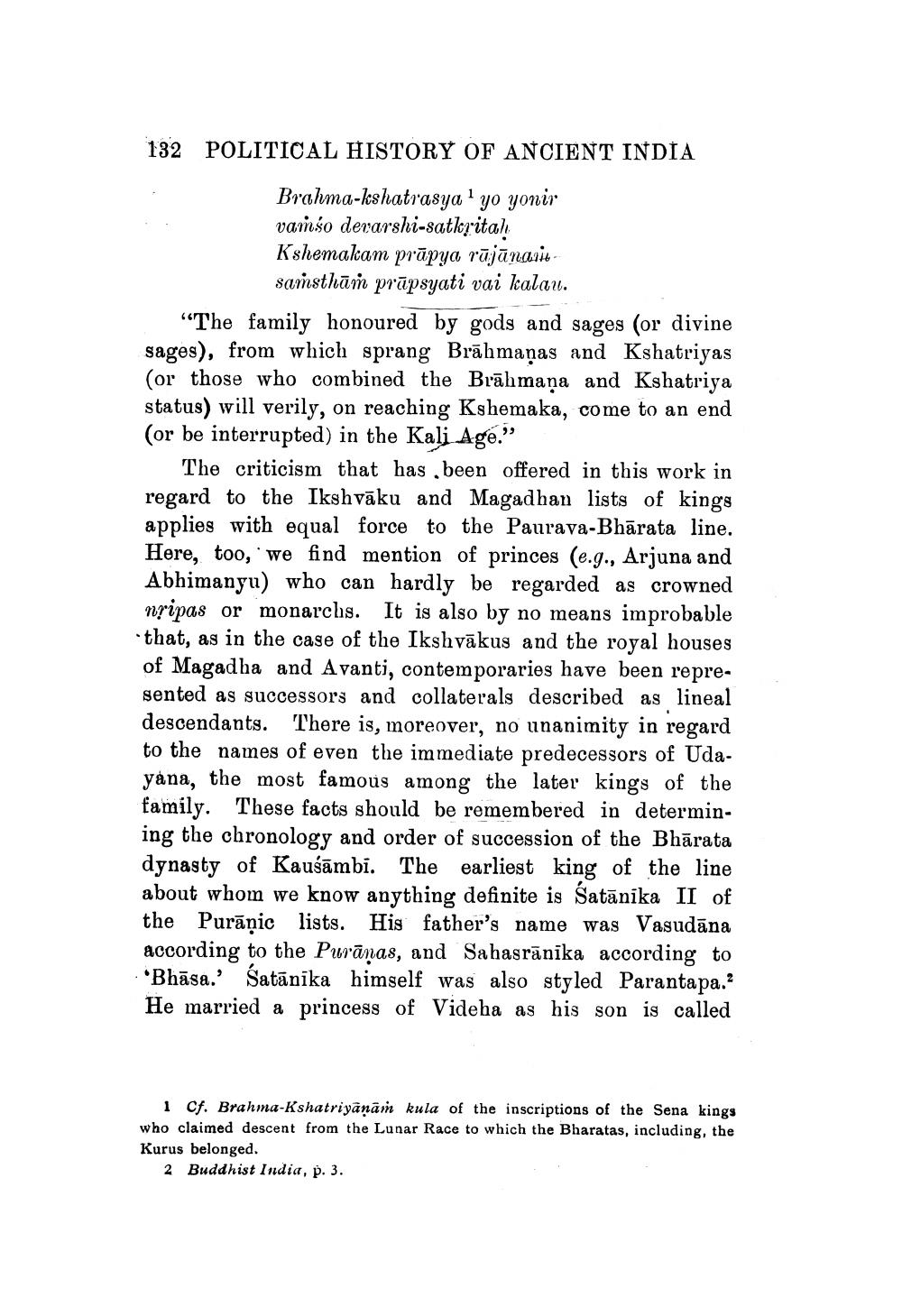________________
132 POLITICAL HISTORY OF ANCIENT INDIA
Brahma-kshatrasya - yo yonir vamso devarshi-satkritah Kshemakam prāpya rūjānasit
samsthāṁ prūpsyati vai kalau. “The family honoured by gods and sages (or divine sages), from which sprang Brāhmaṇas and Kshatriyas (or those who combined the Brāhmaṇa and Kshatriya status) will verily, on reaching Kshemaka, come to an end (or be interrupted) in the Kali Age."
The criticism that has been offered in this work in regard to the Ikshvāku and Magadhan lists of kings applies with equal force to the Paurava-Bhārata line. Here, too, we find mention of princes (e.g., Arjuna and Abhimanyu) who can hardly be regarded as crowned nripas or monarchs. It is also by no means improbable that, as in the case of the Ikshvākus and the royal houses of Magadha and Avanti, contemporaries have been represented as successors and collaterals described as lineal descendants. There is, moreover, no unanimity in regard to the names of even the immediate predecessors of Udayana, the most famous among the later kings of the family. These facts should be remembered in determining the chronology and order of succession of the Bhārata dynasty of Kaušāmbi. The earliest king of the line about whom we know anything definite is Satānika II of the Purāṇic lists. His father's name was Vasudāna according to the Purānas, and Sahasrānīka according to
Bhāsa.' Satānika himself was also styled Parantapa.? He married a princess of Videha as his son is called
1 Cf. Brahma-Kshatriyānām kula of the inscriptions of the Sena kings who claimed descent from the Lunar Race to which the Bharatas, including, the Kurus belonged.
2 Buddhist India, p. 3.




